颠覆认知:数字孪生技术的常见误区与 Senfi 的落地之道
In recent years, digital twin technology has emerged as one of the most transformative tools for the built environment, enabling smarter buildings, more efficient operations, and more sustainable cities. Yet despite its growing adoption, the term “digital twin” is still widely misunderstood. Many organizations remain hesitant to invest in it, often because of misconceptions that limit their understanding of its true potential.
Here are some of the most common misconceptions about digital twins — and how Senfi, G Element’s flagship digital twin platform, is proving them wrong.
1. “A Digital Twin Is Just a 3D Model.”
One of the most widespread misunderstandings is that a digital twin is merely a visual representation — a fancy 3D model of a building or asset.
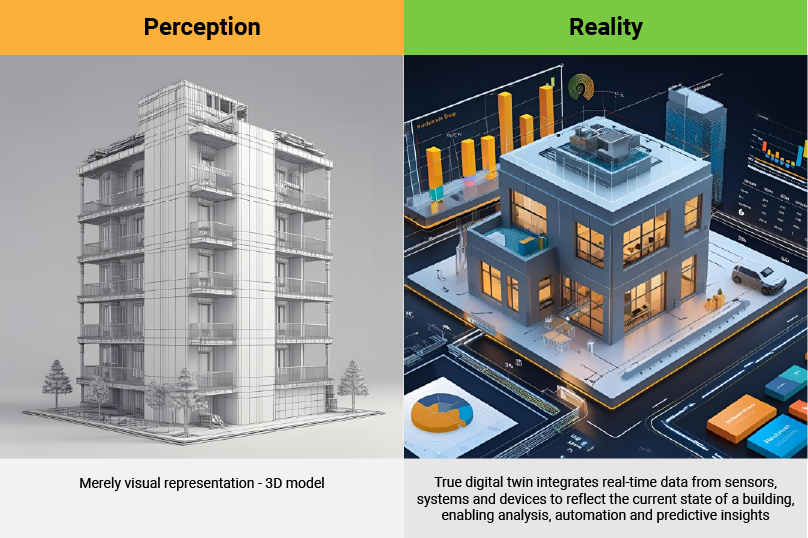
✅ Reality: While visualization is a foundational layer, a true digital twin goes far beyond 3D modeling. It integrates real-time data from IoT sensors, systems, and devices to reflect the current state of a building, system, or city. More importantly, it enables analysis, automation, and predictive insights.
� How Senfi Helps: Senfi unifies 3D visualization with live sensor data, video feeds, and operational data streams — delivering a single source of truth for facility operators. Instead of just “seeing” your building, you can understand and act on what’s happening inside it, in real time.
2. “Digital Twins Are Only for New Buildings.”
Another misconception is that digital twin technology can only be applied to new, state-of-the-art buildings designed with digital systems from the ground up.
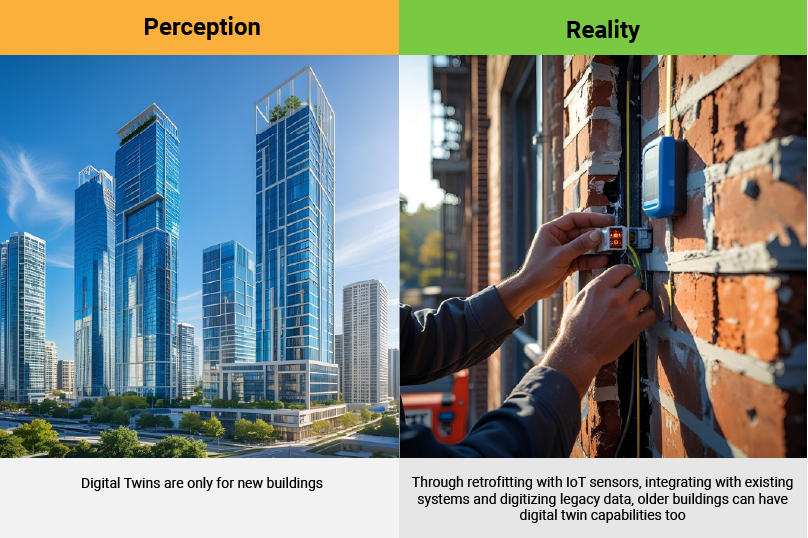
✅ Reality: Digital twins can be created for existing buildings and infrastructure too. Through retrofitting with IoT sensors, integrating with existing systems (like BMS, CCTV, or access control), and digitizing legacy data, older buildings can benefit just as much from digital twin capabilities — often improving their performance significantly.
� How Senfi Helps: Senfi’s open integration architecture connects seamlessly with legacy systems and protocols — from BACnet and Modbus to ONVIF and MQTT — making it easy to digitize existing infrastructure without major overhauls.
3. “It’s Too Expensive and Complex.”
Many decision-makers assume that implementing a digital twin is a large-scale, high-cost project requiring huge budgets and complex integration.
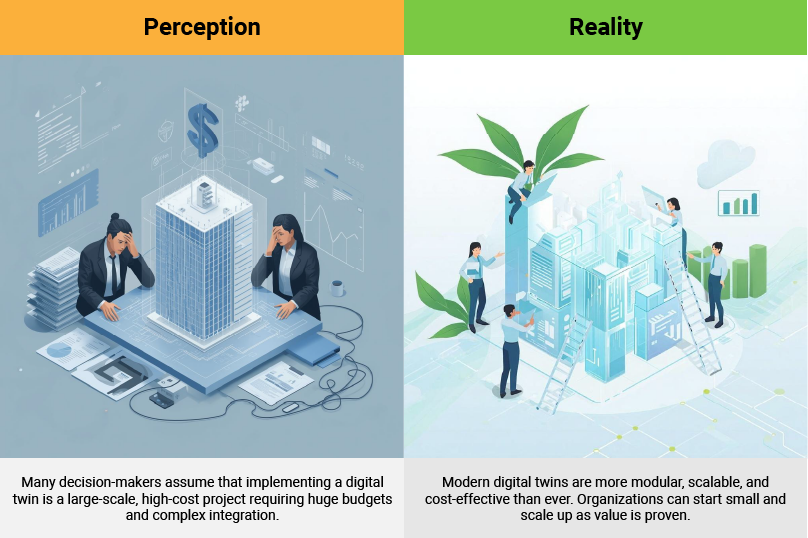
✅ Reality: Modern digital twins are more modular, scalable, and cost-effective than ever. Organizations can start small and scale up as value is proven.
� How Senfi Helps: Designed as a modular, SaaS-ready platform, Senfi allows organizations to start with a single use case — such as energy monitoring or facilities management — and expand over time. Its flexible cloud, on-premise, or hybrid deployment models also make it budget-friendly and future-proof.
4. “Digital Twins Are Only for Monitoring.”
Some view digital twins as passive dashboards that simply display what’s happening in a building.
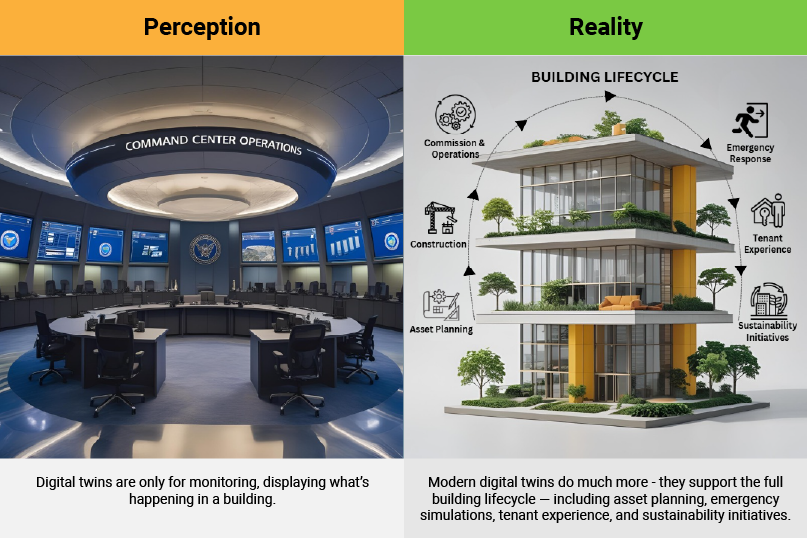
✅ Reality: Modern digital twins do much more — enabling simulation, automation, and prediction。
� How Senfi Helps: Beyond real-time monitoring, Senfi transforms raw data into actionable intelligence. Facility teams can use Senfi to automatically adjust HVAC and lighting systems based on occupancy patterns, improving energy efficiency and reducing costs.
Senfi even enhances incident response and safety workflows. For example, when a security breach or system fault is detected, the platform can automatically trigger alerts, notify the right teams, and provide visual guidance in 3D to resolve the issue faster. This level of automation helps organisations move from reactive responses to proactive, intelligent building operations
5. “It’s Only for Large Enterprises or Governments.”
Because many early adopters have been major corporations or city-scale projects, smaller organizations often assume digital twins are out of reach.
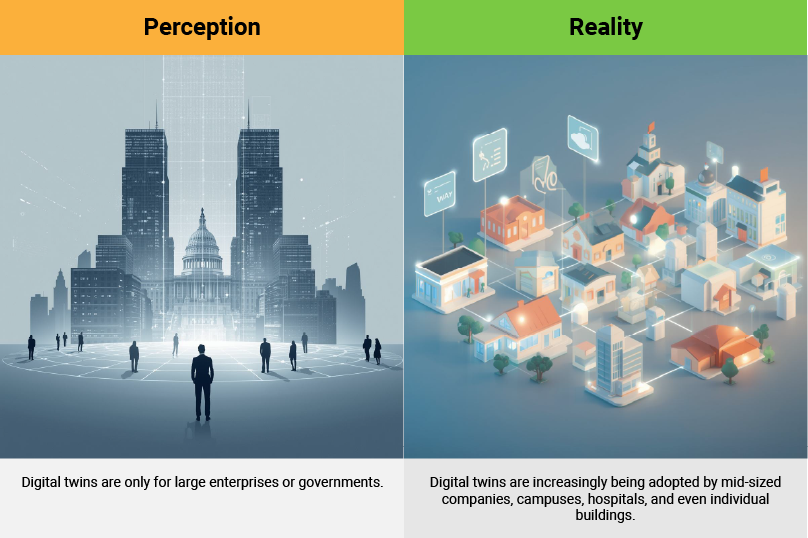
✅ Reality: Digital twins are increasingly being adopted by mid-sized companies, campuses, hospitals, and even individual buildings。
� How Senfi Helps: Senfi is designed for scalability — whether you’re managing a single building, a hospital campus, or an entire city district. Its low-code environment allows even non-technical teams to configure dashboards, workflows, and alerts tailored to their needs.
6. “A Digital Twin Is a One-Time Project.”
Some believe that once a digital twin is deployed, the job is done.
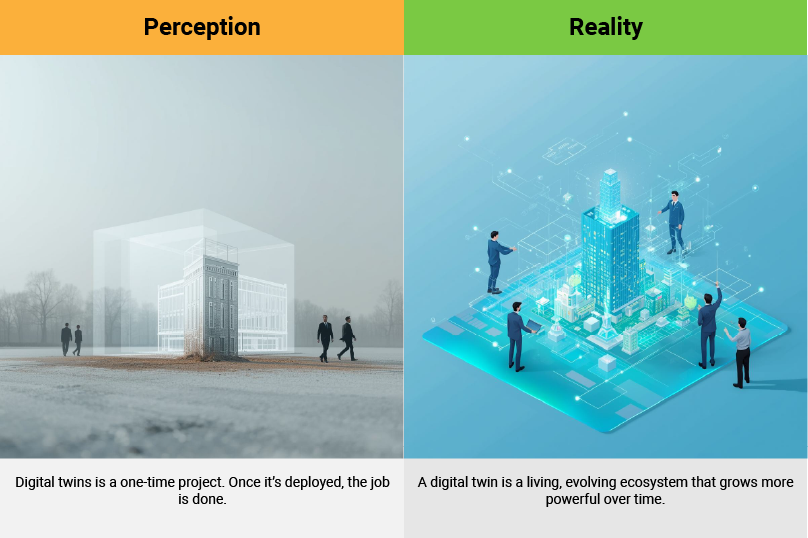
✅ Reality: A digital twin is a living, evolving ecosystem that grows more powerful over time.
� How Senfi Helps: Senfi’s continuous data ingestion and analytics capabilities ensure the digital twin evolves with your building. As new systems are added, the platform adapts — delivering deeper insights and improving decision-making over time.
7. “It’s Just a Trend.”
Skeptics may dismiss digital twin technology as a passing buzzword.
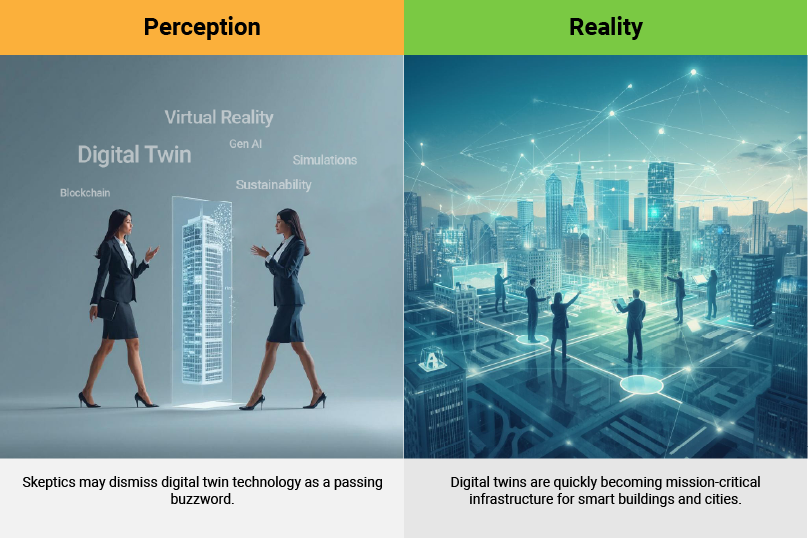
✅ Reality: Digital twins are quickly becoming mission-critical infrastructure for smart buildings and cities.
� How Senfi Helps: Deployed across commercial towers, hospitals, data centres, campuses, and even smart city command centres, Senfi is already helping organizations improve efficiency, reduce carbon emissions, and achieve ESG goals — proving that digital twins are here to stay.
From Misconception to Mission-Critical
Digital twin technology is far more than a visual tool — it’s a powerful platform for data-driven decision-making, predictive intelligence, and operational transformation. Solutions like Senfi are leading the way, turning the digital twin vision into real-world impact — from energy savings and predictive maintenance to safer cities and more sustainable operations.
In an era where the physical and digital worlds are converging, embracing digital twin technology isn’t just a technological upgrade — it’s a strategic imperative. And with platforms like Senfi, it’s also more accessible, scalable, and impactful than ever.


